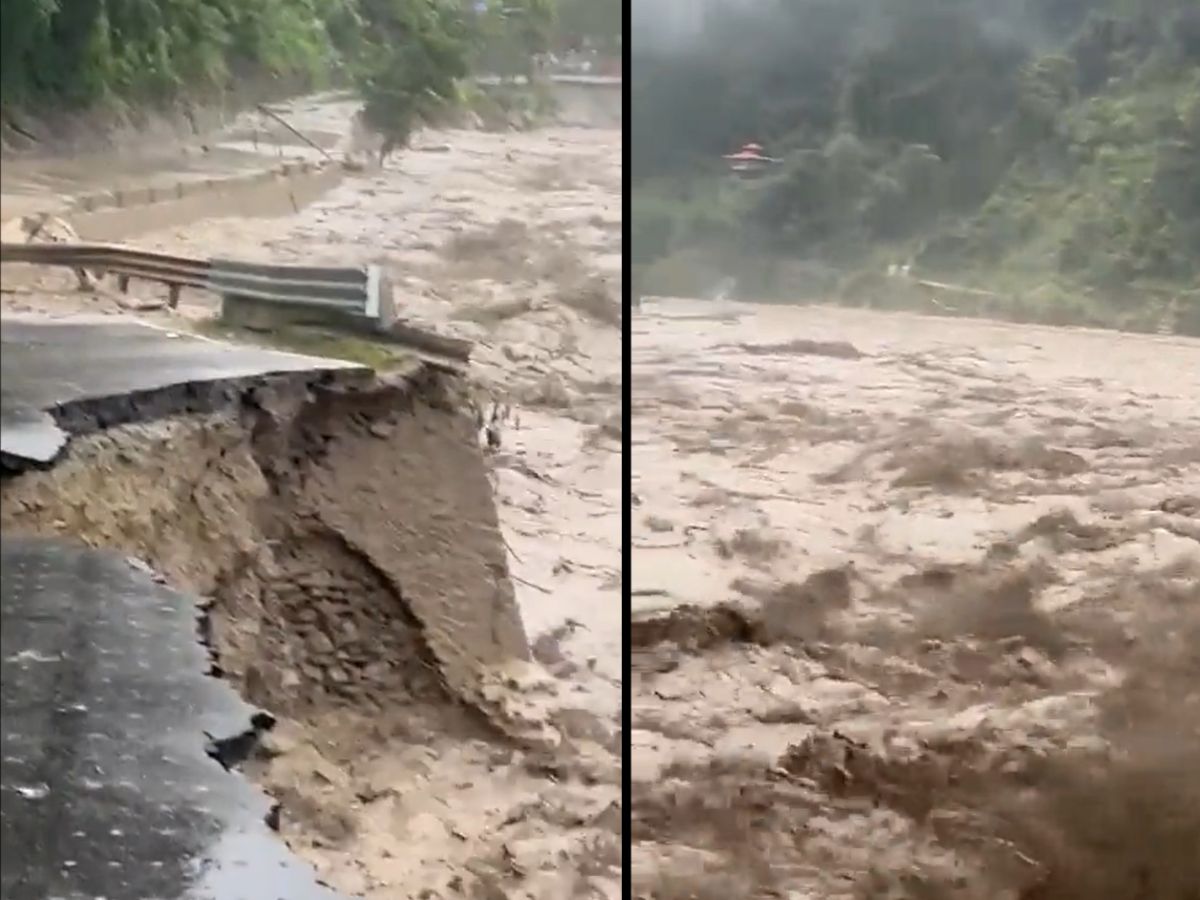At least 11 people have lost their lives and over a 100 individuals – including army personnel – have gone missing in the remote Lachen valley North Sikkim; following a glacial overflow, unusually heavy rainfalls and a cloud burst which triggered flash floods in the Teesta river. Several homes and highways have also been destroyed.
State disaster relief officials have stated that around 4000 individuals were evacuated from areas downstream of the dam to shelter homes on Wednesday. A search operation to trace those missing is also on.
The floods’ true cost to human life will be known after more reports are released from the remote area, and it is expected that missing people will be found alive remote.
The cause and effect of the flood: the details
Several towns, including Singtam, Dikchu and Rangpo have been flooded by the Teesta river.
According to The India Meteorological Department (IMD), North Sikkim received nearly 41mm rain between Tuesday and Wednesday morning. This is five times the expected rainfall that the area receives in this time of the year. More rainfall is to be expected till October 6, predicted The IMD.
The unusually high rainfall levels, coupled with a sudden cloudburst, resulted in floods that caused significant damage to several dams including the Chungthang dam.
The Chungthang dam was severely damaged and released water, which caused a sudden increase in water level; up to 15-20 feet high downstream.
A senior official of the State’s disaster management stated that the water from the floods effectively cut off North Sikkim from the rest of the state; leaving hundreds of individuals marooned.
A Sikkim government statement also stated that the 15-feet-high columns of water also swept away six bridges – including the Indreni steel bridge – and several chunks of National Highway 10, which connects the northern state to West Bengal.

Over 3000 tourists from all over the country have also been reported to being stranded in Sikkim, Chief Secretary of Sikkim, V.B. Pathak stated.
Is climate change a contributing cause to the floods?
The Lhonak Lake is one of the several glacial lakes of Sikkim and it is highly vulnerable to bursting under stress. The Glacial Lake Outburst Flood (GLOF) that occurred in South Lhonak Lake has been attributed to climate change by experts.
A GLOF occurs when a moraine (i.e. debris gradually accumulated by a glacier over years, and functions as a dam) is breached.
What is being done to tame the situation
The National Disaster Response Force (NDRF) has deployed teams and assets of the Army and Air Force to assist the state with rescue and restoration efforts.
All the schools in the districts of Mangan, Gangtok, Pakyong and Namchi will remain closed until October 8, the State’s education department stated.
In Delhi, the National Crisis Management committee has emphasised the evacuation of tourists and those stuck in tunnels.
Impact on Sikkim’s neighbouring states
The Teesta river flows through Sikkim and four districts of West Bengal before entering Bangladesh. A flood alert has been issued in North Bengal and Bangladesh.
What our leaders have to say
Prime Minister Narendra Modi has assured “all possible support” to Sikkim Chief Minister Prem Singh Tamang.
Sikkim Chief Minister visited Singtam to “assess damages and engage with the local community”, following which he urged citizens to refrain from unnecessary travel. He also stated that Emergency services have been mobilised to the areas affected.
West Bengal Chief Minister Mamta Banerjee has also expressed concern over the flash floods and has assured help to the Sikkim government and Army with rescue operations. She has also alerted her government officials regarding the possible flood situation in north and south Bengal.



